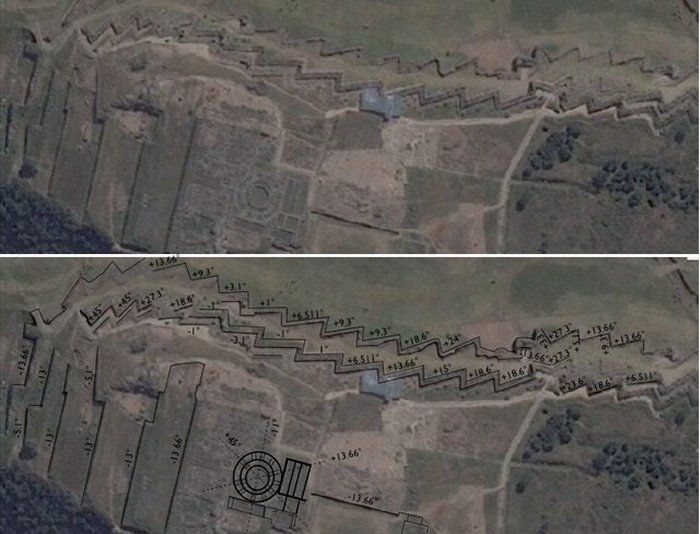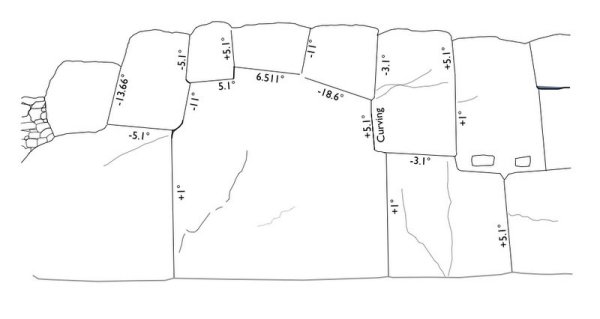30,000-Year-Old Hidden Writing Found At Sacsayhuamán Temple Could Re-Write History
Ellen Lloyd - AncientPages.com - A highly thought-provoking theory has been put forward by a researcher who is suggesting that the fabulous Sacsayhuamán temple in Peru might contain hidden 30,000-year-old writing.
A discovery of this magnitude could easily re-write not only our understanding of the Stone Age but also world history.
Sacsayhuamán - All the blocks were fit together - without mortar - so precisely that even a mechanic's thickness gauge could not be inserted between them. Image credit: Diego Delso - CC BY-SA 4.0
In our article "Sacsayhuamán – Was It Built By ‘Demons’ Or Viracocha The Bearded God?", we examined the walls built by stones that our gigantic modern machinery could hardly move and put in place. Sacsayhuamán, located on the outskirts of the ancient Inca capital city of Cuzco, is one of the most impressive and mysterious fortresses of the Andes.
Sacsayhuamán remains shrouded in mystery. The question of how the stones of Sacsayhuamán were transported remains unanswered. Could the angles of the stones possibly shed more light on the Sacsayhuamán enigma?
Dr. Derek Cunningham, a published author, and researcher, has proposed a controversial and highly intriguing theory.
Based on his studies of the Sacsayhuamán complex, he concluded that the curious angles formed by these stones reveal ancient Inca knowledge of astronomical alignments of the moon, sun, and the earth, as well as knowledge of lunar and solar eclipses.
Image credit: Diego Delso - CC BY-SA 4.0
This should perhaps not be surprising because many ancient temples were astronomically aligned.
However, what Dr. Cunningham suggests is unorthodox because his hypothesis revolves around the thought that our ancient ancestors developed 'writing' at least 30,000 years ago from a geometrical text based on the moon's motion and the sun.
He asserts that such ancient astronomical text, identical to that seen at Sacsayhuamán, is also found in both Lascaux and Chauvet caves in Europe, the African carved Ishango tally bone, and a circa 30,000-year-old carved stone found at the Shuidonggou Paleolithic Site in China.
Dr. Cunningham became interested in Sacsayhuamán when he first noted unusual ground patterns close to some Scottish sites. This discovery drove him to look at other ancient sites hoping to find some similarities, and he did.
He discovered that the Sacsayhuamán stone angles reveal something extraordinary.
"Ancient astronomers chose each astronomical value (there are nine standard values in total) to aid the prediction of eclipses. These astronomical terms are a mixture of values astronomers use to measure time (the 27.32-day sidereal month) and values to determine when the moon, earth, and sun align at nodes.
This includes the use of the 18.6-year nodal cycle of the moon, the 6.511 draconic months period between eclipse seasons, and also the 5.1-degree angle of inclination of the moon's orbit. The remaining values typically are either half-values of various lunar terms, or values connected to the 11-day difference between the lunar and solar years," Dr. Cunningham says.
Sacsayhuaman temple complex astronomical alignments. Image credit: Dr. Derek Cunningham
Dr. Cunningham believes that scientists should focus their attention on the hidden writing discovered at Sacsayhuamán.
"Now, substantial evidence has also been discovered that this archaic writing was used, perhaps almost continuously, until 500 years ago," states Cunningham.
"Recently the analysis of the Muisca Tunjo figurines from Columbia uncovered evidence that they were constructed to the exact same astronomical design as Bronze Age figurines uncovered in Cyprus.
This discovery of such possible "recent" use of a Stone Age text thus prompted me to take a new look at circa 15th to 16th century Inca architecture, which is famous for its fabulous over-complex interlocking walls.
The question I asked was could the massive polygonal walls of Sacsayhuamán align to the exact same astronomical values used in the Columbian Muiscan figurines and the Atacama Giant of Chile?
The surprising result is yes."
One Sacsayhuamán wall example. Drawing courtesy Derek Cunningham
 Second Sacsayhuamán wall example. Drawing courtesy Derek Cunningham
Second Sacsayhuamán wall example. Drawing courtesy Derek Cunningham
"What is powerful about this new theory is that it is very simple and easy to test," adds Cunningham.
"Further work is of course required. Satellite images cannot clearly take the place of direct fieldwork, and photographs placed online may have become distorted, but so far the data obtained appear highly consistent." Dr. Cunningham is not afraid of criticism.
"I honestly do not care whether I am right or wrong about this," he concludes.
"All I have found so far is that the data is what it is. The potential of the idea to explain some things about so many sites from the pyramids of Egypt to the Atacama Giant in Chile is obviously very controversial, and it should be. But if correct, it could rewrite some aspects of our understanding of not only the Stone Age but also world history. If, on the other hand, scholars prove this specific astronomical theory wrong, then we can move on, knowing that it has been sufficiently tested.
What is most intriguing is that a completely new window may have been opened into the past."
Updated on August 28, 2022
Written by Ellen Lloyd – AncientPages.com
Copyright © AncientPages.com All rights reserved. This material may not be published, broadcast, rewritten or redistributed in whole or part without the express written permission of AncientPages.com
More From Ancient Pages
-
 Why Was Alexander A Great Military Genius?
Ancient History Facts | Oct 23, 2018
Why Was Alexander A Great Military Genius?
Ancient History Facts | Oct 23, 2018 -
 On This Day In History: Battle of Salamis Was Fought – On Sep 22, 480 BC
News | Sep 22, 2016
On This Day In History: Battle of Salamis Was Fought – On Sep 22, 480 BC
News | Sep 22, 2016 -
 Babylonians And Sumerians Had Advanced Knowledge Of Astronomy
Civilizations | Feb 28, 2017
Babylonians And Sumerians Had Advanced Knowledge Of Astronomy
Civilizations | Feb 28, 2017 -
 Unique Medieval Horsemen Sculptures Made By Unknown Creators In India – Puzzling Discovery In The Himalayas
Archaeology | Oct 23, 2017
Unique Medieval Horsemen Sculptures Made By Unknown Creators In India – Puzzling Discovery In The Himalayas
Archaeology | Oct 23, 2017 -
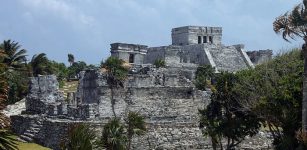 Tides And Hurricane Activity Impacted The Maya Civilization – What Can This Tell About Modern Climate Change?
Archaeology | Aug 18, 2021
Tides And Hurricane Activity Impacted The Maya Civilization – What Can This Tell About Modern Climate Change?
Archaeology | Aug 18, 2021 -
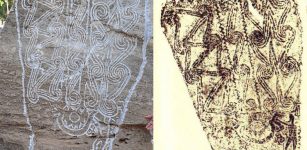 Bulgaria’s Reliefs From Ancient Thracian Sun Shrine – Restored
Artifacts | Sep 29, 2015
Bulgaria’s Reliefs From Ancient Thracian Sun Shrine – Restored
Artifacts | Sep 29, 2015 -
 Vikings’ Legacy Is Still Alive In Ireland – DNA, Ancient Ruins And Modern Cites Reveal
Civilizations | May 22, 2021
Vikings’ Legacy Is Still Alive In Ireland – DNA, Ancient Ruins And Modern Cites Reveal
Civilizations | May 22, 2021 -
 Ancient DNA Reveals Mongolia’s First Nomadic Empire Was Multiethnic
DNA | Apr 14, 2023
Ancient DNA Reveals Mongolia’s First Nomadic Empire Was Multiethnic
DNA | Apr 14, 2023 -
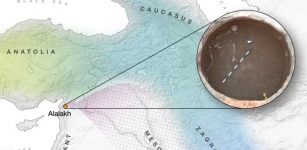 Mysterious Ancient Remains Of The Lady In The Well – An Archaeological Detective Story
Archaeology | Sep 11, 2020
Mysterious Ancient Remains Of The Lady In The Well – An Archaeological Detective Story
Archaeology | Sep 11, 2020 -
 Strange Story Of Tecumseh’s Comet, Black Sun Prophecy And New Madrid Earthquakes – The Biggest Earthquakes In American History
Ancient Mysteries | Nov 14, 2018
Strange Story Of Tecumseh’s Comet, Black Sun Prophecy And New Madrid Earthquakes – The Biggest Earthquakes In American History
Ancient Mysteries | Nov 14, 2018 -
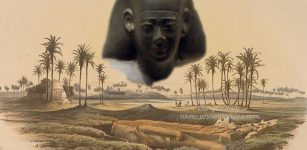 Pharaoh Apries – Was The Betrayed Egyptian King Murdered By His Own People?
Featured Stories | Jun 30, 2021
Pharaoh Apries – Was The Betrayed Egyptian King Murdered By His Own People?
Featured Stories | Jun 30, 2021 -
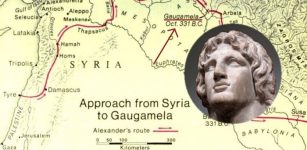 Why Is The Battle Of Gaugamela Called Broken ‘Camel’s Back’?
Ancient History Facts | Jul 1, 2020
Why Is The Battle Of Gaugamela Called Broken ‘Camel’s Back’?
Ancient History Facts | Jul 1, 2020 -
 Parthians: Their Great Empire And Skilled Horse Archers
Civilizations | Nov 10, 2016
Parthians: Their Great Empire And Skilled Horse Archers
Civilizations | Nov 10, 2016 -
 Archaeologists Solve A 1,000-Year-Old Mystery Mentioned In Norse Sagas
Featured Stories | Oct 10, 2024
Archaeologists Solve A 1,000-Year-Old Mystery Mentioned In Norse Sagas
Featured Stories | Oct 10, 2024 -
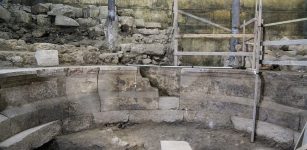 Roman Theater Unearthed After 1,700 Years Near Western Wall In Jerusalem
Archaeology | Oct 19, 2017
Roman Theater Unearthed After 1,700 Years Near Western Wall In Jerusalem
Archaeology | Oct 19, 2017 -
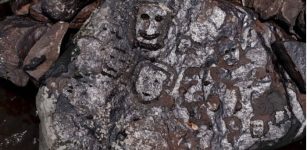 Drought Reveals 2,000-Year-Old Rock Carvings In Brazil’s Amazon
Archaeology | Oct 23, 2023
Drought Reveals 2,000-Year-Old Rock Carvings In Brazil’s Amazon
Archaeology | Oct 23, 2023 -
 Major Puzzle In Mammal Skull Shape Evolution Solved
Evolution | Dec 20, 2023
Major Puzzle In Mammal Skull Shape Evolution Solved
Evolution | Dec 20, 2023 -
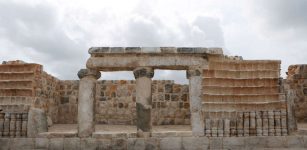 Ancient Mayan City Filled With Palaces, Pyramids And Plazas Discovered On Construction Site In Mexico
Archaeology | May 27, 2022
Ancient Mayan City Filled With Palaces, Pyramids And Plazas Discovered On Construction Site In Mexico
Archaeology | May 27, 2022 -
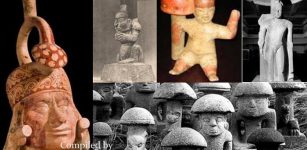 Mysterious Ancient Mushrooms In Myths And Legends: Sacred, Feared And Worshiped Among Ancient Civilizations
Featured Stories | Apr 26, 2023
Mysterious Ancient Mushrooms In Myths And Legends: Sacred, Feared And Worshiped Among Ancient Civilizations
Featured Stories | Apr 26, 2023 -
 Ancient Children Played Marbles Thousands Of Years Ago
Ancient History Facts | May 22, 2019
Ancient Children Played Marbles Thousands Of Years Ago
Ancient History Facts | May 22, 2019



